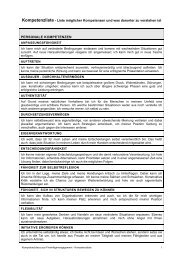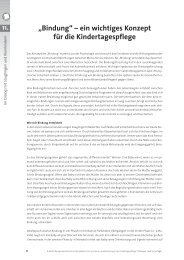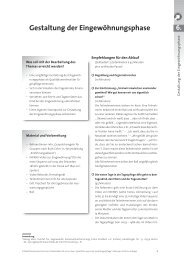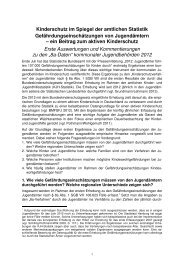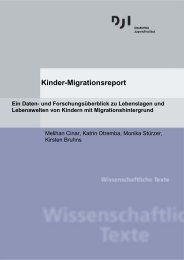download - Deutsches Jugendinstitut e.V.
download - Deutsches Jugendinstitut e.V.
download - Deutsches Jugendinstitut e.V.
You also want an ePaper? Increase the reach of your titles
YUMPU automatically turns print PDFs into web optimized ePapers that Google loves.
national observation authority. British colleagues presented the activities of the Children’s<br />
Funds in Great Britain. The establishment of local Children’s Funds in British cities and<br />
districts constitutes a programmatic element of the national agenda “Every Child Matters”.<br />
The main points of discussion focussed on three levels:<br />
1. Transversal strategies on a national level – How will it be possible to institutionalise<br />
and implement a transversal perspective at the top level of political decisionmaking?<br />
2. Governance structures on a local level – How can local authorities implement<br />
transversal strategies? Which actors will cooperate with one another (state, social<br />
and private sectors) and how will this cooperation be achieved? In which<br />
institutional context will the projects and services offered be embedded? How will<br />
these projects and services be developed and assigned?<br />
3. Which of these planned concepts will be well received by children and youths and<br />
what effects can be achieved?<br />
Similarities<br />
The political fields on which the programmes and individual programme elements are<br />
based are largely similar in all countries presented: integration, security, health and<br />
employment.<br />
It should be underlined that in all three countries the main emphasis is on education<br />
programmes.<br />
The programmes presented have all been initiated centrally and at national level.<br />
A particular common characteristic to be underlined is that in all three countries there is<br />
or has been inter-ministerial cooperation in the development of the programmes.<br />
A transversal perspective is also anchored at local levels in all three countries; the aim is<br />
therefore cooperation between the appropriate state and social actors – youth welfare<br />
offices, independent bodies, educational institutions, encouragement of employment,<br />
police and health institutions.<br />
All three programmes presented have a common social environmental orientation,<br />
although it became clear that this principle did not lead to the desired results in the case of<br />
target groups characterised by vagrancy (Sinti, Roma and travellers).<br />
In all three cases, an integrated perspective targeting children and youths was<br />
highlighted which is already expressed in the above-mentioned principle of social<br />
environmental orientation; here the children’s complete social environment in which the<br />
problems originate is taken into account in the efforts to solve these problems.<br />
Finally, it can be attested that all approaches presented are strongly resource-orientated.<br />
All programmes are based on the encouragement and mobilisation of already existing<br />
structural and individual resources in disadvantaged urban districts and regions.<br />
66





